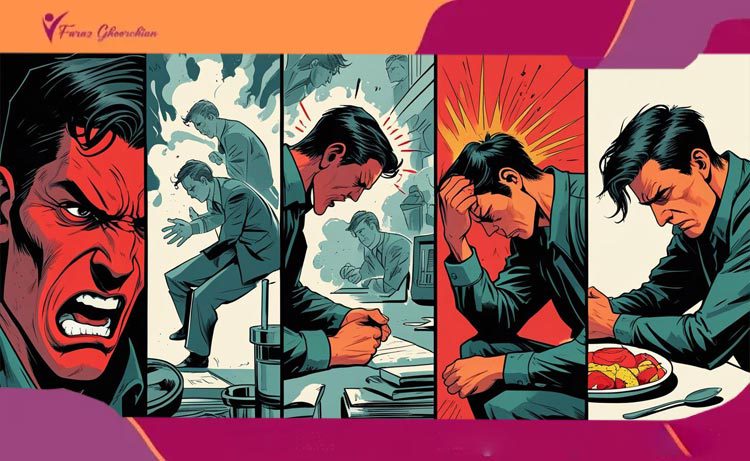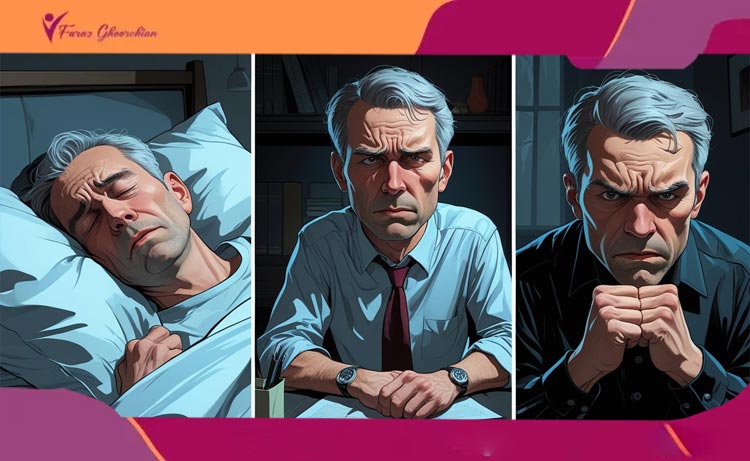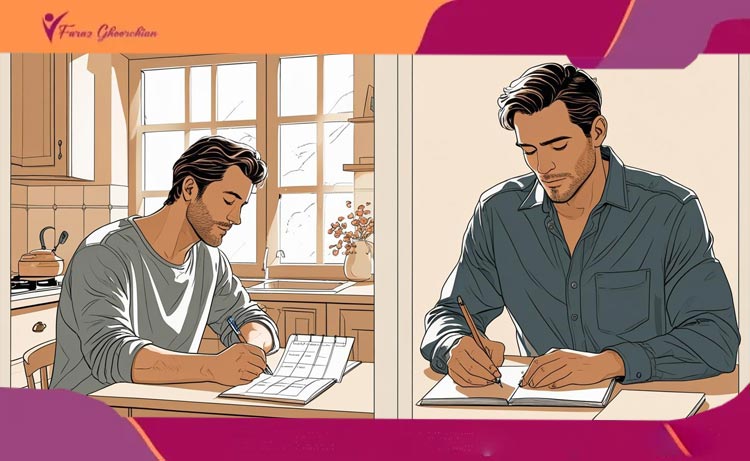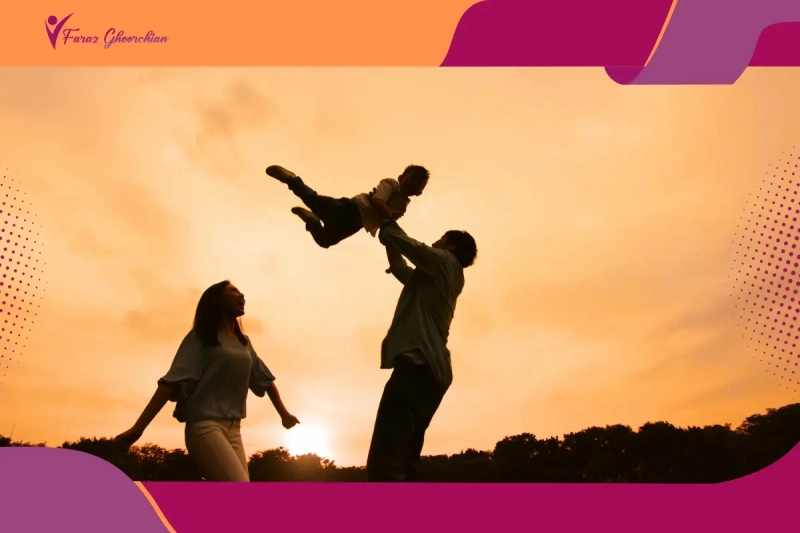- 1. Introduction: Why Understanding Porn Withdrawal Matters
- 2. What Are Porn Withdrawal Symptoms?
- 3. Recognizing the Early Signs of Porn Withdrawal
- 4. Physical Symptoms of Porn Withdrawal
- 5. Emotional Symptoms: Anxiety, Depression, and Mood Swings
- 6. Timeline of Porn Withdrawal: What to Expect
- 7. Dealing with Porn Withdrawal Cravings and Urges
- 8. Sleep Problems, Brain Fog, and Irritability
- 9. Relapse and the Healing Process from Porn Addiction
- 10. Practical Tips & Coping Strategies for Lasting Recovery
- 11. Conclusion
- 12. FAQs
Introduction: Why Understanding Porn Withdrawal Matters
For anyone thinking about quitting, it’s common to feel a little lost when porn withdrawal symptoms and how to handle them become real. Some notice mood swings or a restless feeling that’s hard to shake. Others talk about unexpected lows, trouble sleeping, or even feeling foggy for days. These are just a few signs of porn withdrawal that tend to catch people off guard. It isn’t just about the obvious cravings or physical urges. The emotional symptoms of porn withdrawal like anxiety, sadness, or frustration can feel overwhelming at first. Understanding both the physical symptoms of porn withdrawal and the emotional side is the first step toward taking back control. With a clearer picture of what’s happening, anyone can begin to find practical ways forward.
What Are Porn Withdrawal Symptoms?
When someone decides to quit, it’s not unusual to wonder exactly what porn withdrawal symptoms look and feel like. These symptoms are the body and mind’s way of adjusting to life without constant sexual stimulation. People often report both physical symptoms of porn withdrawal and emotional shifts. On the physical side, some experience headaches, changes in sleep, low energy, or even a sense of restlessness. At the same time, emotional changes might show up as mood swings, anxiety, or periods of sadness.
What makes porn withdrawal symptoms and how to handle them so complex is that each person’s reaction is unique. The signs of porn withdrawal can show up just days after quitting or sometimes take longer to appear. For many, it also means breaking old routines and confronting long-held bad habits that were tied to porn use. Understanding both the emotional symptoms and the physical symptoms of porn withdrawal gives individuals a stronger foundation for recovery. Recognizing these changes early can help anyone create a practical plan for how to handle porn withdrawal as the days go by.
Recognizing the Early Signs of Porn Withdrawal
It isn’t always obvious when porn withdrawal symptoms are starting to creep in. Sometimes it’s just a weird, restless energy or little things feeling off. Some people mention feeling “off” for days before realizing what’s happening. A few of the most common early signs of porn withdrawal that tend to show up are:
- Mood swings that seem to come out of nowhere
- Difficulty staying focused, even on things that used to be easy
- Strange headaches or a sense of physical tension
- Emotional symptoms like unexpected anxiety or sadness
- A wave of cravings that almost catches them by surprise
Spotting these physical symptoms of porn withdrawal and emotional shifts early helps with how to handle porn withdrawal before it gets overwhelming. No two people go through it the same way, but noticing the changes is a powerful first step. For some, it also raises deeper questions like Can Porn Addiction Affect Your Relationship? especially when emotional distance or irritability starts spilling into daily interactions.
Physical Symptoms of Porn Withdrawal
When it comes to porn withdrawal symptoms, the physical side is often unexpected and can feel confusing at first. Some people notice headaches, muscle tension, or a heavy, tired feeling that’s hard to shake. Others experience sleep problems after quitting porn, such as tossing and turning at night or waking up without feeling rested. Even minor aches, fatigue, or changes in appetite can become part of the picture.
These physical symptoms of porn withdrawal usually show up in the first few days, but for some, they might linger. It helps to recognize that these reactions are the body’s way of adjusting. Paying attention to these changes makes it easier to respond with healthy routines and self-care. For anyone dealing with discomfort, gentle exercise and good sleep habits can make a real difference as part of how to handle porn withdrawal in daily life.
Emotional Symptoms: Anxiety, Depression, and Mood Swings
Sometimes, the hardest part of quitting isn’t physical at all. For many, it’s the emotional symptoms that seem to sneak up out of nowhere. One day, there’s a spike of anxiety during porn withdrawal; another, it’s a dip into sadness or even stretches that feel close to depression after quitting porn. Some people notice their patience wears thin and little things set them off, which points to those unpredictable mood swings from porn withdrawal. These changes can make everyday life feel strange or even overwhelming.
It’s not unusual to question if what you’re feeling is normal. The truth is, these ups and downs are part of the adjustment. There’s a strong link between mental health and porn withdrawal, and understanding that connection can make a big difference. By noticing both the emotional and physical symptoms of porn withdrawal, a person can start to figure out how to handle porn withdrawal in ways that actually fit their real life. Sometimes, that just means asking for help or taking things slow.
Timeline of Porn Withdrawal: What to Expect
The timeline of porn withdrawal never really looks the same for two people. Some notice that cravings hit hard within the first couple of days, mixed with tired mornings and a bit of restlessness. For a few, that so-called brain fog during porn withdrawal shows up next, making it tough to focus or remember simple things. Sleep can turn odd, too, with some reporting nights that feel way too long or filled with restless energy.
Around the second week, a lot of people talk about a wave of emotional symptoms of porn withdrawal. There might be moments of frustration or sudden sadness that seem to come out of nowhere. Others feel anxious without a clear reason. It’s not always obvious how long these signs of porn withdrawal will stick around, but recognizing the pattern can make the whole process feel less scary and a little more manageable.
Dealing with Porn Withdrawal Cravings and Urges
Almost everyone going through porn withdrawal symptoms finds cravings pop up when least expected. Sometimes it’s a wave that hits after a tough day or a random thought that shows up out of nowhere. One person once described the urge as “an itch you can’t quite scratch.” It helps to know these feelings are completely normal during the timeline of porn withdrawal.
There’s no magic fix, but there are tricks that seem to help. Stepping outside, splashing cold water on your face, or texting a friend can pull you out of the moment. Some distract themselves by doodling or listening to loud music until the feeling fades. It’s not about fighting the cravings perfectly. It’s about getting through that urge, one small decision at a time. The real progress comes from noticing what triggers those porn withdrawal cravings and finding what actually helps, even if it’s just a small win that day.
Sleep Problems, Brain Fog, and Irritability
Sleep can get weird when someone is facing porn withdrawal symptoms. A lot of people notice they’re tossing and turning or waking up way too early. Some even say they feel tired no matter how many hours they spend in bed. That groggy, out-of-it feeling, often described as brain fog during porn withdrawal, can make a normal day seem twice as hard. It’s frustrating to misplace keys or lose your train of thought in the middle of a sentence.
Then there’s the short fuse. Irritability and porn withdrawal often show up together, turning minor annoyances into big frustrations. It helps to remember that these are normal adjustments, not personal failures. These issues are part of the broader effects of quitting porn, especially as the brain begins to reset its reward system. Good sleep routines, walks outside, and cutting yourself some slack can go a long way. Over time, those rough patches tend to fade as the mind and body settle into healthier habits and learn how to handle porn withdrawal.
Relapse and the Healing Process from Porn Addiction
A relapse during porn withdrawal can feel discouraging, but it doesn’t mean the progress is lost. Many people slip up at some point, especially when facing intense stress, loneliness, or emotional triggers. What matters most is how they respond afterward. A single relapse does not erase the effort that came before it. Instead, it can be part of the healing process from porn addiction, helping someone understand their patterns more clearly.
Taking time to reflect without judgment is key. What led to the relapse? What could be done differently next time? These honest questions support long-term change. Having support during porn withdrawal symptoms can also make a big difference. Whether it’s a close friend, a therapist, or an online group, consistent support builds accountability. Every setback holds the potential to strengthen the path forward and reinforce what works when learning how to handle porn withdrawal in real life.
Practical Tips & Coping Strategies for Lasting Recovery
Real recovery from porn withdrawal symptoms doesn’t come from one big change. It’s the little things, stacked up, that really help. Some people swear by a simple walk first thing in the morning or texting a friend when the urge gets tough. Here are a few coping strategies for porn withdrawal that have actually worked for others:
- Try making a loose daily plan, even if it’s just breakfast and a quick walk
- Write down what’s tough or what’s working
- Move your body, even if you’re just stretching in your room
- Let someone you trust know what you’re going through
- Look for support during porn withdrawal if you feel stuck
- Give yourself credit for every small win, no matter how tiny
Many of these are simple but powerful porn withdrawal recovery tips that help make the process feel less overwhelming. With practice, these small efforts start to add up and make the healing process from porn addiction feel possible.
Conclusion
There’s no sugarcoating it. Dealing with porn withdrawal symptoms can really knock a person off balance some days. The mix of tiredness, mood swings, and those nagging urges isn’t easy to explain to anyone who hasn’t felt it. Still, plenty of people find their footing with a few simple coping strategies for porn withdrawal and a little patience. One person might feel brain fog lift after a week, while someone else struggles longer with sleep. That’s normal. What matters is sticking with the process and not giving up on small steps. With time, the rough patches fade, and what once felt impossible turns into real progress on the healing process from porn addiction.
FAQs
- How long do porn withdrawal symptoms last?
The timeline for porn withdrawal symptoms is different for everyone. Some people notice the worst cravings or physical symptoms of porn withdrawal fade after a week or two, while others might deal with mood swings or sleep problems for a month or more. It often depends on how long someone used porn and their own habits.
- Is anxiety during porn withdrawal normal?
Yes, feeling anxious is one of the most common emotional symptoms of porn withdrawal. The mind and body need time to adjust, so it’s not unusual to experience stress, racing thoughts, or even some sadness in the first weeks.
- What if there’s a relapse during porn withdrawal?
Relapses are part of many recovery journeys. A slip does not mean failure. Most people find that learning from the situation and using new coping strategies for porn withdrawal can make a big difference. Support during tough moments helps build lasting change.
- Are there tips for managing urges after quitting porn?
Definitely. Many people recommend finding healthy distractions, building new routines, and reaching out for support during porn withdrawal. Simple changes such as staying active or talking to a friend can help when urges feel overwhelming.
- What is the most important thing for recovery?
Patience. Every step, no matter how small, is a move toward the healing process from porn addiction.

















